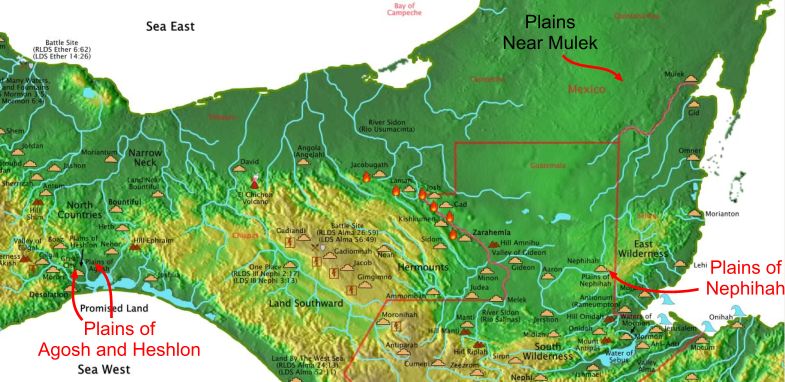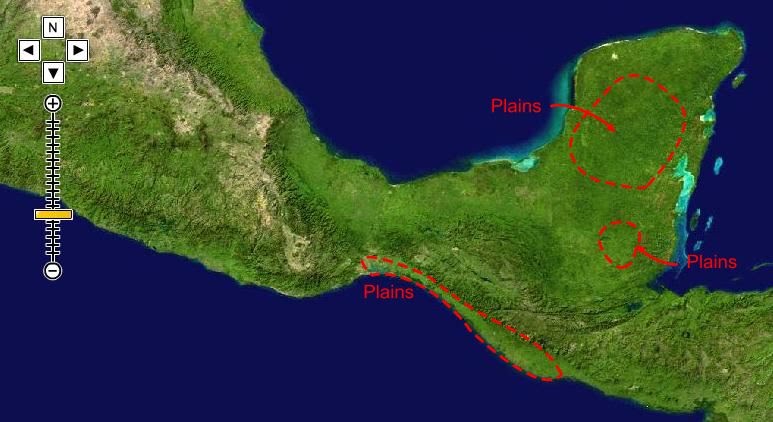Plains in the Book of Mormon (Mesoamerica)

(Tap to Expand)
So, are there plains in Mesoamerica? Yes. While Mesoamerica is known for jungles, there were three areas of plains before 300 A.D. Two of these plains exist today. Before 300 A.D., the central lowlands of the Yucatan peninsula were a broadly savannah-like environment. Today, this area is a low-land forest. The Maya Mountains of Belize create sort of a rain shield and the north-east portion of Guatemala around Poptun is savannah-like and is one of the few places in Mesoamerica where savannah-type vegetation can be found. The Pacific Ocean helps create grasslands on the west coast around the Isthmus of Tehuantepec and further south. The area around the isthmus is flat and the area along the coast further south is sloped grassland. Many place names today in the area contain the word "llano" - meaning plain. If we identify these places on the map, they occur in the exact same places as the plains mentioned in the Book of Mormon.
Plains of Mexico and Guatemala (Before 300 A.D.)

(Tap to Expand)
This is the only world location where plains exist where they are described in the Book of Mormon in relation to the cities they are associated with. These plains locations do not correspond to the Grajalva River theory of the Book of Mormon geography. The savannah area of northeast Guatemala is not well known even today. No maps published before 1830 ever included this plain. It is still not easy to identify it as a savannah today from the material available on the internet. The plains in the Yucatan peninsula were not even known to exist in 1830 since these turned into low forest more than a thousand years before European explorers first step foot in the area. The plains in this area could only have been known by people that lived in the area before 300 A.D.
